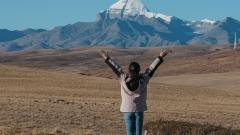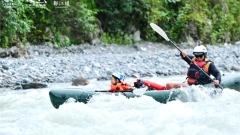This guide profiles ten of China’s most unforgettable mountains — a balanced mix of soaring 8,000-meter giants, sacred peaks of ancient religions, and lower-elevation ranges famous for cinematic scenery and cultural heritage. For each mountain you’ll find a concise portrait, the major highlights, popular activities, recommended travel seasons and practical tips (including permits where relevant). Use this as a planning companion for a China mountain trip that matches your interests and fitness level.
Namcha Barwa in Tibet – Paradise in the Clouds
Location and Altitude
Namcha Barwa rises in the remote eastern reaches of the Tibetan Plateau, in Nyingchi (Nyingtri). It reaches about 7,782 meters, pushing a crown of glaciers above dense, forested valleys.
Why Visit
Namcha Barwa is famed for being almost always shrouded in cloud, earning it the romantic title “Paradise in the Clouds.” Its dramatic silhouette anchors one of the most spectacular river gorges on Earth, carved by the Yarlung Zangbo (Brahmaputra) as it sweeps around the massif.
Highlights
- Yarlung Zangbo Grand Canyon viewpoints for sweeping panoramas.
- Traditional Tibetan villages and highland forests below the snowline.
- Dawn and dusk light on the glaciers — magical for photographers.
Activities
Photography, sightseeing drives, short treks near scenic platforms, and (for expert alpinists) high-altitude climbing attempts.
Best Time to Go
October through April — especially October–November for clear autumn skies and thinner cloud layers.
Practical Notes
Travel in this region generally requires local Tibetan travel permits (TTB, ATP) and careful acclimatization because of the high elevations and remoteness.
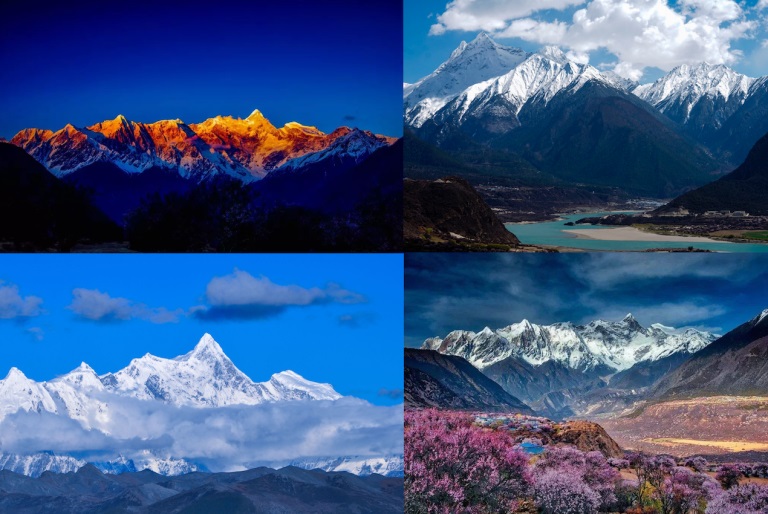
Tibet Namcha Barwa
Mount Gongga in Sichuan – The King of Sichuan Mountains
Location and Altitude
Known in Tibetan as Minya Konka, Gongga Mountain towers over western Sichuan with a main summit of roughly 7,556 meters.
Why Visit
Gongga is a dramatic, steep massif — called “the King of Sichuan Mountains” — surrounded by hundreds of subsidiary icy peaks. It’s famous for its persistent glaciers, high vertical relief and dramatic alpine lakes.
Highlights
- Clustered snow peaks and expansive glacier systems.
- Plateau lakes and highland meadows that shift color through the seasons.
- A challenging mountaineering history that draws elite climbers.
Activities
Photography, trekking in surrounding valleys, and expert mountaineering for very experienced teams.
Best Time to Go
May and June are the most common months for expeditions and high-altitude exploration.
Practical Notes
Gongga’s terrain is technical and dangerous; summit attempts are for very experienced climbers only. For visitors, the lower valleys and lakes make excellent, safer alternatives for scenic trekking.

Sichuan Gongga mountain
Mount Everest in Tibet – The World’s Highest Mountain
Location and Altitude
The northern flank of Mount Everest stands in Tibet; the peak reaches 8,848.86 meters, the highest point on Earth.
Why Visit
Standing at any Everest viewpoint — from Rongbuk Monastery to the Tibetan Base Camp panoramas — gives a visceral sense of scale and the high-altitude environment. The mountain’s shifting glaciers, ice towers and unpredictable weather create an unforgettable mountain landscape.
Highlights
- Sunrise and sunset lines on the summit — a bucket-list photo moment.
- Rongbuk Monastery and Tibetan plateau ecosystems descending into subtropical valleys.
- A unique blend of nature and the human stories of climbers and local peoples.
Activities
Base camp treks, photography, high-altitude camping, and technical mountaineering on the Nepal side for those properly equipped.
Best Time to Go
Best windows are April–early June and mid-September to October when weather windows for climbing and trekking are usually most favorable.
Practical Notes
Travel to the Tibetan side requires permits (TTB, ATP, and sometimes a Tibet Frontier Pass). Proper acclimatization and preparation for high altitude are essential.
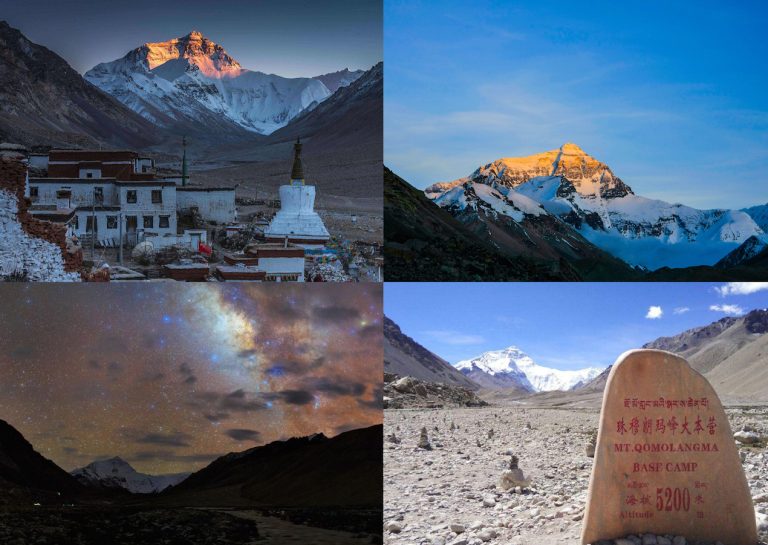
Tibet Mount Everest
Meili Snow Mountains in Yunnan – Snow God’s Guard of Honor
Location and Altitude
The Meili range spans the Yunnan–Tibet border. Kawagarbo, the highest peak, stands around 6,740 meters and is central to local Tibetan spiritual life.
Why Visit
Kawagarbo is one of the most revered peaks in Tibetan culture and has the rare status of having resisted successful human ascent — climbing is taboo for local religious reasons. The contrast of dense alpine forests, long glacier tongues and snow crowns creates dramatic vistas.
Highlights
- Golden Mountain effect at dawn when the first sunlight turns the peaks warm gold.
- Sacred pilgrimage trails and Bon and Buddhist cultural influences.
- Scenic viewpoints at Wulongding and Feilaisi for the most spectacular views.
Activities
Photography, sightseeing and trekking in adjacent valleys; pilgrimage observation rather than summit attempts.
Best Time to Go
January to May offers the clearest skies and the best chance to see the golden sunrise on Kawagarbo.
Practical Notes
Respect local customs: Kawagarbo is sacred and climbing is discouraged. Maintain cultural sensitivity at pilgrimage sites.
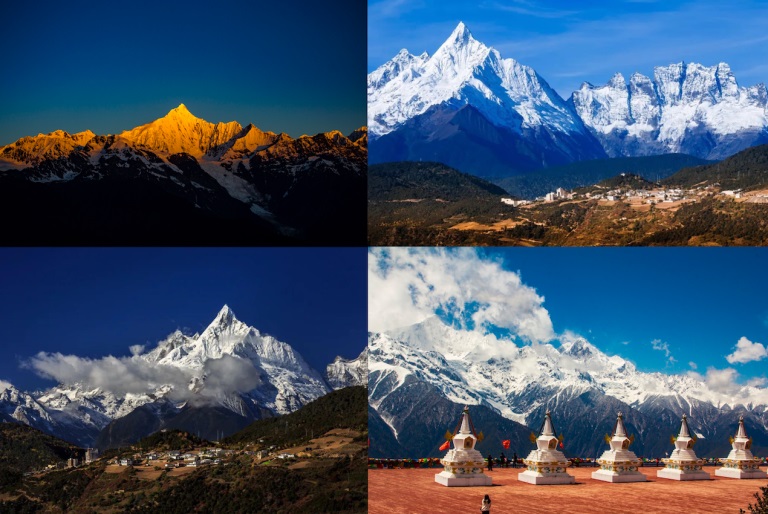
Yunnan Mount Meili
Mount Huangshan in Anhui – The Bonsai of God
Location and Altitude
Huangshan sits in southern Anhui province and is accessible from China’s eastern plains and cities.
Why Visit
Huangshan is arguably China’s most famous scenic mountain for classic Chinese landscape imagery: contorted pines clinging to sheer rocks, clouds pooling like a sea, and fantastical granite formations that inspired literati painting and poetry for centuries.
Highlights
- Grotesque-shaped rocks and ancient pine trees.
- Endless seas of clouds, spectacular sunrises and sunsets.
- Well-preserved cultural heritage: ancient paths, temples and stone carvings.
Activities
Cable or trail hikes between scenic peaks, sunrise and landscape photography, cultural walks, and overnight stays on the mountain to catch weather shifts.
Best Time to Go
April to November for the most comfortable weather, though winter offers dramatic snow scenes and fewer crowds.
Practical Notes
Huangshan is highly touristic but retains a serene, otherworldly beauty — plan early mornings for the best light and fewer visitors.

Anhui Mount Huangshan
The Three Holy Mountains in Daocheng Yading – Landmarks of Shangri-La
Location and Altitude
In Daocheng Yading (Sichuan), three snow-capped peaks — Xiannairi (≈6,032 m), Yangmaiyong (≈5,958 m), and Xianuoduoji (≈6,000 m) — rise as a trio of sacred summits.
Why Visit
Called the Three Holy Mountains, the peaks are steeped in Tibetan Buddhist symbology and resemble a trio of sacred guardians. The valley between them offers mirror lakes, waterfalls, and crystal rivers framed by snow peaks.
Highlights
- Pure alpine lakes that reflect the peaks like glass.
- Pilgrimage routes and prayer flags that color the high passes.
- A vivid combination of glaciers, meadows, ancient forests and waterfalls.
Activities
Photography, day hikes and multi-day treks around the Yading nature reserve; pilgrimage walking routes are common in the area.
Best Time to Go
September to October, when autumn colors and clearer skies make the peaks pop.
Practical Notes
Yading has strict ecological protections — follow park regulations and stick to designated trails.
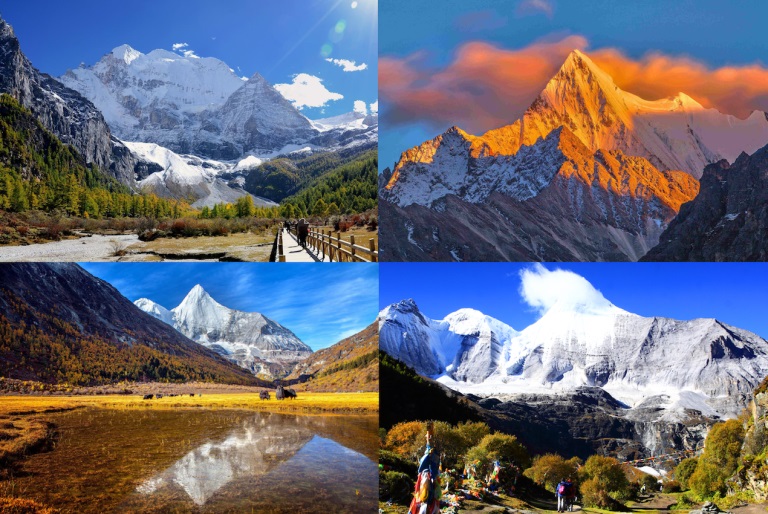
Up left – Xiannairi, Up right – Xianuoduoji, Down – Yangmaiyong
Chogori in Xinjiang – The Remote, Unforgiving Summit
Location and Altitude
Chogori, known globally as K2, sits on the Karakoram range and reaches about 8,611 meters, with part of its massive flanks in China’s Xinjiang region.
Why Visit
K2 is the second-highest mountain on Earth and one of the most feared in the mountaineering world. Its nearly vertical faces, extreme technical challenges and volatile weather patterns make it a peak for only the most elite climbers.
Highlights
- Sheer, knife-like ridges and towering ice cliffs.
- Vast glacial systems, including the long Yinsugeti Glacier.
- An aura of extreme mountaineering history and prestige.
Activities
High-level trekking in surrounding foothills, base camp expeditions for experienced climbers, and landscape photography from distant viewpoints.
Best Time to Go
Summer and early autumn are the most common windows for expeditions, though conditions remain harsh and unpredictable.
Practical Notes
K2 has one of the highest difficulty and mortality profiles among the world’s great peaks — approach it only with elite experience and rigorous support.
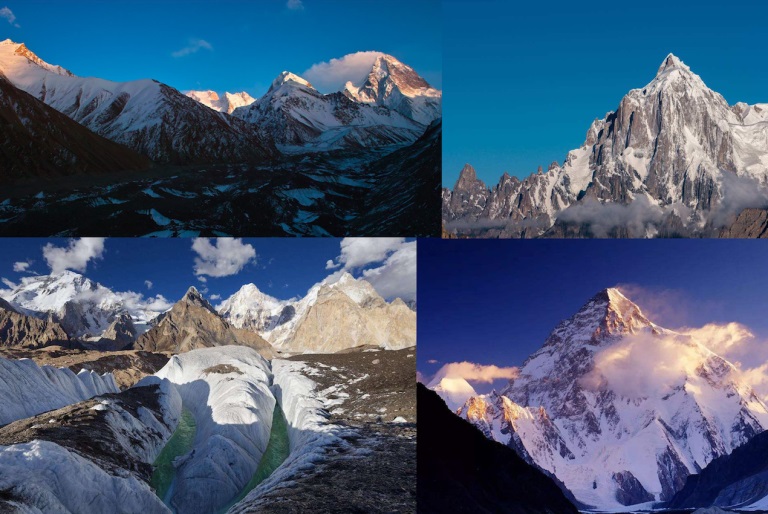
Xinjiang Chogori Peak
Mount Kailash in Tibet – Abode of the Gods
Location and Altitude
Mount Kailash sits in far-western Tibet (Burang County region) and reaches approximately 6,656 meters.
Why Visit
Kailash is a focal point for Hinduism, Tibetan Buddhism, Bon and ancient Jain traditions. Pilgrims from several faiths come to circle the mountain on its sacred kora; many believe completing the full 52-kilometer circumambulation brings spiritual merits.
Highlights
- The kora (pilgrimage circuit) — a 3-day walking route around the peak.
- Remote lakes and rugged desert plateau that give Kailash a sense of otherworldly serenity.
- Local monasteries and pilgrimage rituals that reveal living religious traditions.
Activities
Trekking the kora, spiritual pilgrimage, photography and cultural immersion.
Best Time to Go
Mid-May to mid-October for accessible paths and milder weather on the plateau.
Practical Notes
Travel to the region requires Tibet permits (TTB, ATP) and often additional approvals such as military permits because of proximity to international borders. Respect local religious customs and dress modestly during pilgrimage.
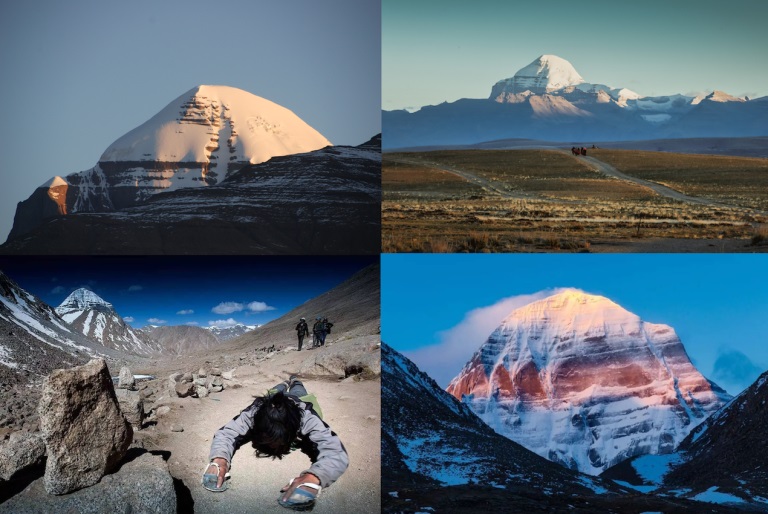
Tibet Mount Kailash
Mount Tai in Shandong – Totem of China
Location and Altitude
Mount Tai rises from the plains near the Yellow River in Shandong Province and — while modest in elevation compared to Himalayan giants — is enormous in cultural weight.
Why Visit
Mount Tai (Tai Shan) is the most celebrated of China’s Five Great Mountains and has been a pilgrimage destination for emperors and commoners for millennia. Its thousand-year history, ancient temples, and tens of centuries of inscriptions make it a living museum of Chinese civilization.
Highlights
- Historic temples, stone inscriptions and ancient architectural complexes like Daimiao.
- The spectacular sunrise sequence from the summit.
- The Muta Forest and Lingyan Temple relics that date back to the Tang dynasty.
Activities
Hiking the classic routes up stairways of stone, sunrise watching, cultural tours and photography of historic architecture.
Best Time to Go
May to November offers the best hiking weather and blossoms in spring.
Practical Notes
Mount Tai is accessible as a day trip from nearby cities; climb at a gentle pace to enjoy both the scenery and the cultural sites.
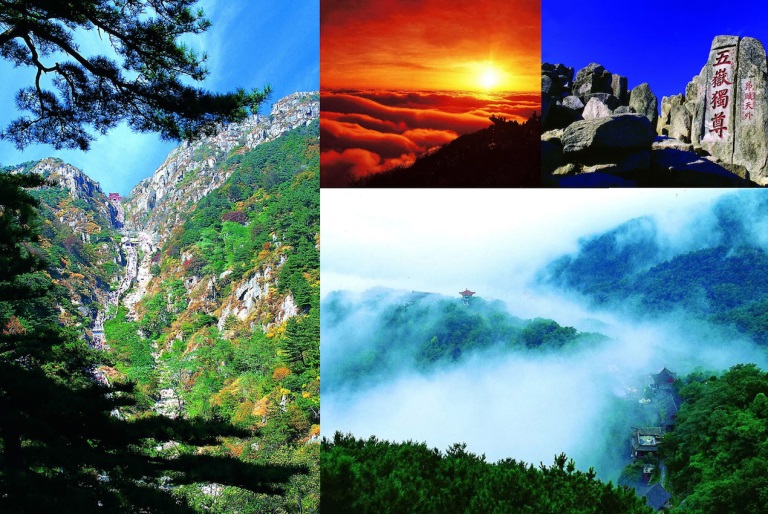
Shandong Mount Tai
Mount Emei in Sichuan – Ascend From the Basin to Heaven
Location and Altitude
Mount Emei rises from the Sichuan Basin and is one of the four sacred Buddhist mountains in China; its Golden Summit is a famed viewpoint and pilgrimage destination.
Why Visit
Emei offers a rare combination: lush biodiversity, significant Buddhist heritage and a series of dramatic natural “wonders” — golden temple architecture, sea of clouds, spectacular sunrises, and dense subtropical forest biodiversity.
Highlights
- Golden Summit and the reconstructed temple complex.
- Diverse plant and animal life in different elevational bands.
- Hot springs in lower elevations and easy access from Chengdu.
Activities
Temple visits, moderate hikes, wildlife watching, hot springs and easy multi-day hikes through scenic stages.
Best Time to Go
Spring and autumn (notably April and October) when the mountain’s scenic qualities peak.
Practical Notes
Emei is visitor friendly with well-maintained trails; it’s an excellent choice for museum-minded travelers who want nature and culture in a single trip.
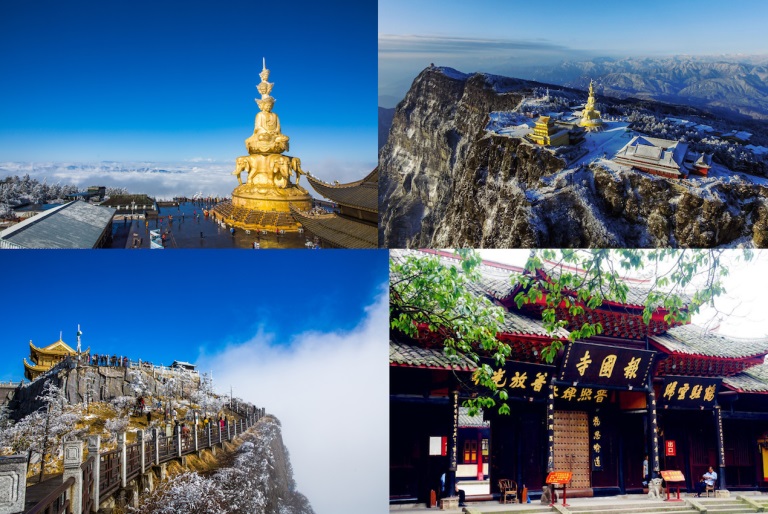
Sichuan Mount Emei
How to Choose the Chinese Mountain for Your Trip
- If you want high alpine spectacle but limited exertion: Choose Mount Huangshan or Mount Emei for dramatic scenery and accessible facilities.
- If you seek cultural depth and pilgrimage experiences: Mount Kailash, Mount Tai and Meili offer strong spiritual and historical connections.
- If you’re an advanced climber: Everest (technical climbs), Gongga and K2 are for experienced, well-supported expeditions only.
- If your focus is photography: Early mornings on Huangshan, Meili and Namcha Barwa offer unique light conditions; Yading is the jewel box for mirrored lakes and pristine reflections.
- If you want remote wilderness: K2 and the high Tibetan ranges deliver solitude and raw landscapes — but plan for logistics and permits.
Practical Tips for Chinese Mountain Travel in China
Permits and Paperwork
- For Tibetan plateau destinations (Everest north side, Namcha Barwa, Kailash, parts of Meili), travelers generally need Tibet Travel Bureau (TTB) permits and Alien Travel Permits (ATP); some border areas also require a military permit or frontier pass. Always check current permit rules with a reputable local operator before you go.
- Other mountains like Huangshan, Emei and Tai are regular tourist destinations requiring standard park fees and sometimes advance timed tickets — no special national-level permits.
Altitude and Acclimatization
- Spend several days acclimatizing when going above 3,000 meters. Symptoms of altitude sickness can come on quickly; descend if you feel serious headache, nausea or disorientation.
- Hydration, steady pacing and avoiding alcohol help adaptation.
Safety and Logistics
- Hire experienced local guides for remote mountain regions. Local teams know the terrain, weather patterns and cultural rules.
- Weather in high mountains is notoriously changeable — bring layered clothing, a windproof shell, sun protection, and sturdy footwear.
- Always leave a travel plan with an agency and emergency contact, especially for multi-day treks in remote areas.
Photography and Respect
- Respect local customs: in pilgrimage and monastery areas, ask before photographing people, especially during rituals.
- For drone use, check local regulations — many Chinese national parks and sacred sites restrict drones.
Environmental Responsibility
- Pack out what you pack in. Stay on marked trails. High-altitude ecosystems are fragile; footsteps and waste matter here more than elsewhere.
- Support local communities by using licensed guides, staying in local guesthouses and buying handcrafted goods.
How We Can Help Your Chinese Mountains Tours
China’s mountains provide a deep and diverse playground for travelers. From the spiritual kora walks at Mount Kailash to the bonsai granite peaks of Huangshan, and from the remote, cloud-locked Namcha Barwa to the fearsome flanks of K2 — there is a mountain for every traveler’s curiosity and courage. The right trip balances ambition with respect: for the environment, for local cultures, and for the physical demands of altitude and remoteness.
If you’d like a custom itinerary, permit assistance, local guides or photography-focused departures, China Dragon Travel specializes in mountain tours across Tibet, Sichuan, Yunnan, Anhui and Xinjiang. We can tailor an adventure to your fitness level, interests and travel dates — from gentle cultural mountain escapes to carefully supported high-altitude treks. Reach out and we’ll craft a safe, inspiring and unforgettable mountain journey through China.




